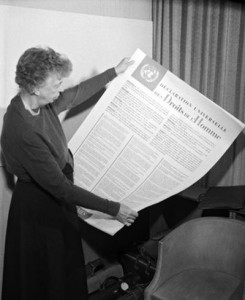by Susan Johnston | Dec 12, 2014 | Uncategorized |
 I am about to wander downstairs and make shortbread, as generations of women in my family have done and will continue to do long after I am gone. Shortbread, fruitcake, mince tarts, pfeffernüsse, stollen, bûche de noël and tourtière are baked into our Christmas traditions with varying amounts of cinnamon, cloves, ginger, almonds and way too much butter.
I am about to wander downstairs and make shortbread, as generations of women in my family have done and will continue to do long after I am gone. Shortbread, fruitcake, mince tarts, pfeffernüsse, stollen, bûche de noël and tourtière are baked into our Christmas traditions with varying amounts of cinnamon, cloves, ginger, almonds and way too much butter.
Acknowledging that there are people in my family (and, perhaps, yours) who question whether fruitcake is food, or even edible, it’s safe to say that Christmas baking is about more than nourishing our bodies. We nourish traditions. We feed memories. We satisfy a craving for a time – real or imagined – when Christmas wasn’t about spending money but about spending time together.
When we nourish someone or something, we provide them with food and other things needed for health. We help them develop or grow stronger. Providing food is the most obvious form of nourishment. Today our local food bank put out a call for the most useful donations:
- Peanut Butter
- Beans in Sauce
- Canned Fish
- Canned Fruit
- Cold Cereal
We also nourish spirits, our own and others.
Music nourishes my spirit, especially this time of year when some really excellent music can be found. We learn to tune out the ubiquitous drone of ‘Santa Baby’ and ‘Jingle Bell Rock’ and track down the carols and anthems that have been treasured through decades, if not centuries. (Speaking of which, I cannot resist the opportunity to promote our concert, tomorrow evening.)
What nourishes your spirit? Meditation? Prayer? A walk in nature? A call from a friend?A call to a friend? I’m betting it’s not fruitcake.
It’s easy to lose track of that side of ourselves in the pre-holiday rush at work, the gifts, the greetings, the tree, the travel and, yes, even the baking.
What are you nourishing?
Who are you nourishing?
How can you nourish yourself?
This is a series inspired by House of Friendship Kitchener’s 12 Days for Good project. There’s a theme for each of the 12 days – no golden rings required. Learn more at http://12daysforgood.com
by Susan Johnston | Dec 11, 2014 | Uncategorized |
“You may say, “I don’t have a creative bone in my body.” Not true. We’re going to help you find that creative bone!”
Those are the words of Carolyn Dawn Good, a Kitchener artist and community catalyst I often describe as “the most creative person you will ever meet.” I write about her today for two reasons.
- One, it’s Day Four of the 12 Days For Good, in which House of Friendship reminds us that giving at this time of year isn’t just about presents. And Day Four = Creativity.
- Two, I spent a few hours with Carolyn, today, rolling paper beads. They will become works of art, like the angel pictured. And, yes, you can have one, too. (We were at The Generous Host, a lovely oasis of creative energy.)
There’s a story, of course, one of hope and transformation and drama and, yes, the involvement of a creative community.
It all began with a house fire in Carolyn’s downtown neighbourhood. It was a mess – not just the physical structure, but the financial picture and the impact on the family. The house had good bones and more than a few people saw possibility beyond the damage. Angels from the community, Carolyn among them, pulled together to mop up and begin repairs. The vision is not just to salvage this house but to transform it, and include a creative space the community can use.
Which brings me to the beads. The paper being transformed into angelic artwork is printed with photos taken just after the fire. From ashes to angels. Masterpieces from a mess. Horrifying to heavenly. Terror to treasure. I’ll stop the alliterative sloganeering, you get the picture. If not, here’s a real picture.
Carolyn is usin g the beads to create original numbered works of art – angels and stars to trim a tree, hang in a window, give as gifts, inspire your own creativity. And, you guessed it, most of the funds raised from sales will go to help fund the house restoration. Two-by-fours and two-by-sixes aren’t glamorous gifts, but they matter to builders. Angels sales will contribute.
g the beads to create original numbered works of art – angels and stars to trim a tree, hang in a window, give as gifts, inspire your own creativity. And, you guessed it, most of the funds raised from sales will go to help fund the house restoration. Two-by-fours and two-by-sixes aren’t glamorous gifts, but they matter to builders. Angels sales will contribute.
This project exemplifies creativity. People from all walks of life, businesses, builders, neighbours, strangers, individuals and communities opened their doors, their wallets, space on their calendars to bring this idea to life. Yes, creativity is in the artworks, themselves, and the artistry involved in the restoration. Yet creativity is also in seeing the possibility in situations around us.
Creativity is not just in the creative arts. Creativity is as useful in business as it is in the arts. A recent Fast Company article suggests the characteristics artists need and use are increasingly valuable in business.
As a coach and a trainer of coaches, I’m dedicated to the International Association of Coaching’s Mastery #8 – Invite possibility. When we see things from a new perspective, welcoming the unexpected, tugging on the threads not usually seen, we open up a range of creative options that help us transform our work, our lives and our world. “What else might be possible?” is a very powerful question.
All people are naturally creative and resourceful. Most of us are at our best when we are using our creativity. For some of us, our creative streak is in the arts. For others our creativity is not where society traditionally looks for it, but in finding new ways to get things done. We may be software developers, construction workers, barristas, municipal employees, parents or postal workers.
- Where is your creativity?
- How can you unleash it today?
This is a series inspired by House of Friendship Kitchener’s 12 Days for Good project. There’s a theme for each of the 12 days – Calling Birds required. Learn more at http://12daysforgood.com
by Susan Johnston | Dec 10, 2014 | Uncategorized |
 On December 10th, 1948, the international community, appalled by “barbarous acts which have outraged the conscience of mankind” they’d seen in World War II, vowed such atrocities would never happen again. They signed the Universal Declaration of Human Rights. It was designed to bolster the United Nations Charter (1945) with guidelines to guarantee the rights of individuals everywhere.
On December 10th, 1948, the international community, appalled by “barbarous acts which have outraged the conscience of mankind” they’d seen in World War II, vowed such atrocities would never happen again. They signed the Universal Declaration of Human Rights. It was designed to bolster the United Nations Charter (1945) with guidelines to guarantee the rights of individuals everywhere.
Were we to try to fit this document into a nutshell, we could select Article 3. “Everyone has the right to life, liberty and security of person.” The other 29 articles spell out more details of what violations look like, mention standard of living, education, even culture and specify that ‘everyone’ means everyone.
The way it’s supposed to work
In the 66 years since the declaration, dozens of international treaties, conventions and covenants have been signed and enacted. In signing these international treaties, national governments commit to respect, protect and fulfil human rights. The deal is that they must not interfere with or curtail these rights, they must protect people against human rights abuses and they must take action to facilitate basic human rights. These provisions are to be enshrined in domestic legislation. Should that fail, there are processes to take it to the international level.
Yet with frightening regularity, we hear regimes accused of human rights violations. Just last week, leaders of world religions gathered at the Vatican to declare the intention to eradicate slavery. The international news is filled with stories of rigged elections, limitation of free speech, abuses by security forces, arrests without trial, people tortured or disappearing. Around the world – and even in our own country – many women, especially, enjoy neither freedom nor security. Closer to home, people of all sorts experience discrimination and intolerance.
And we wonder, “What can someone like me do about this?”
- Notice the rights you enjoy.
- What do those rights mean to you?
- What would life be like without them?
- Which of your rights do you value the most?
- Where is someone fighting for that right?
- Where can you learn more about who is helping and how?
Every day can be Human Rights Day.
This is a series inspired by House of Friendship Kitchener’s 12 Days for Good project. There’s a theme for each of the 12 days – no French hens required. Learn more at http://12daysforgood.com
by Susan Johnston | Dec 9, 2014 | Uncategorized |
 I was raised to believe that we make our own opportunities. That’s easy to believe when your family and community provide you with safe places to live and play, a great education, three squares a day, inspiring role models and a comforting hug when things go wrong. As a child growing up in a fortunate home, I didn’t really have to create opportunities. I just had to notice them and do something with them.
I was raised to believe that we make our own opportunities. That’s easy to believe when your family and community provide you with safe places to live and play, a great education, three squares a day, inspiring role models and a comforting hug when things go wrong. As a child growing up in a fortunate home, I didn’t really have to create opportunities. I just had to notice them and do something with them.
Did I make the most of these opportunities? Who can say? What I do know is that I’ve reached the stage and age at which creating opportunities for others is increasingly important.
The best leaders help others succeed. Management author John Maxwell asks, “When opportunity knocks, do you answer the door and hold it open for others?”
We understand “opportunity” to mean a situation that can lead someone to reaching a goal. How do we create those opportunities? How can creating them become a habit, not just something we do at Christmas? Or because it’s 12 Days For Good? How do we do it when we aren’t the sort of people who can write large cheques to worthy causes?
Here are some questions to ponder:
When I reflect on my own life, who created opportunities for me?
What did those opportunities look like?
Were they aware they were creating them?
Did those people have to risk something to create those opportunities for me?
Can I do what they did?
Who am I creating opportunities for?
How can I amplify those opportunities by joining with others in my community?
Opportunities for us to create opportunities for others are everywhere.
This is a blog series inspired by House of Friendship Kitchener’s 12 Days for Good project. There’s a theme for each of the 12 days – no Turtle Doves required. Learn more at http://12daysforgood.com
by Susan Johnston | Dec 8, 2014 | Uncategorized |
 A few weeks ago, I put together a personal list of Coaching Values. One of them is compassion. Today, I’m examining, more deeply, what it means.
A few weeks ago, I put together a personal list of Coaching Values. One of them is compassion. Today, I’m examining, more deeply, what it means.
It’s the theme for the first of the 12 Days of Christmas, when House of Friendship, a local charitable social services agency, invites the Kitchener-Waterloo community to take part in 12 Days for Good. We commit to doing something good every day for our favourite causes and our community. Each day has a theme – today, it’s compassion.
As I consider compassion and what it means in my own life, as a coach and as a person – and try to think of ways to demonstrate it – I see that it’s not simply a feeling. It requires action. Or so it seems to me. Even the dictionary definition indicates a desire to alleviate the suffering.
Compassion (n) – a feeling of deep sympathy and sorrow for another who is stricken by misfortune, accompanied by a strong desire to alleviate the suffering.
Though they’re sometimes used interchangeably, sympathy, empathy and compassion are quite different. All involve feeling, but it’s the depth of the feeling and what emerges from it that make the distinction.
Sympathy – When I feel sympathy, I feel FOR you. I feel sad that you’re having a bad time, but there is distance between me and your pain. I don’t actually feel it. It’s more of an intellectual exercise than a participative one. I can recognize that things are awful for you, but I’m not affected.
Empathy – When I feel empathy, I feel WITH you. I tune into your emotional experience. I more than intellectualize what you’re going through, I vicariously experience some of it. Whether or not I have gone through a similar experience, I can imagine what it would be like and, in my brain, my understanding of your emotion has me experiencing it, myself. I am definitely affected, sometimes profoundly.
Compassion – When I feel compassion, my empathy provokes me to take action. Doing something seems to be the distinguishing feature of compassion. True compassion puts your needs ahead of my own. I stand with you.
Here’s an example
We see a homeless person huddled in a public space, her shopping bags piled around her, and think, “Poor woman. Must be awful to live that way. I wonder what her story is.” We walk around her and go about our business. That is sympathy. We notice her plight and may feel sad for her, but don’t identify with it or with her.
When we see her and imagine what it means to be cold and alone, with nowhere to go and living on the streets, we’re closer to empathy. We begin to feel her fear, despair, anger, hope, confusion. We can imagine ourselves in her situation and experience strong feelings. We are touched, sorrowful, upset. When we feel the feeling and stop there, that is empathy.
When the emotions we feel when we encounter this homeless woman cause us to do something to help her or others in her situation, we are closer to compassion. We recognize (sympathy), identify with and feel (empathy) her pain and are inspired or impelled to alleviate it. So we bring her a blanket, buy her a meal, volunteer at a shelter, lobby for assisted housing, whatever we can do. Maybe all we can do is meet her eyes with ours to let her know that she is not invisible.
So what does compassion have to do with coaching?
Few of us coach in tragic or desperate situations. In a broad sense, compassion involves noticing someone’s need, empathizing and doing something to meet that need. For most coaching situations, whether we coach individuals or teams, that need is a desire to grow or move towards a desired change. Coaching with compassion enables people to move from being afraid of change to being open to new possibilities – even inviting them.
This is a series inspired by House of Friendship’s ’12 Days for Good’ project. There’s a theme for each of the 12 days – no partridges or pear trees required. Learn more at http://12daysforgood.com
by Susan Johnston | Dec 1, 2014 | Uncategorized |

Agile is like keeping your balance when someone rocks the boat.
Every few weeks, someone I know learns what I’m up to and asks, “Who are these ‘agile coaches’ you work with?” So I try to explain. It’s not easy. But I love trying.
First I have to explain what ‘agile’ is. “It’s like the real meaning of the adjective,” I suggest. “Quick, co-ordinated, flexible, nimble. It’s like not losing your balance when the boat rocks. When we’re agile in our lives and businesses, we can adapt to changing circumstances.” They get that. They want that. We all do.
One of the businesses that’s wanted to be adaptive forever – or at least since the ’80s, when I first worked in it – is software development. In 2001, a gathering of industry luminaries set out four values and 12 principles they believed would help create better software. Today, the Agile Manifesto and Agile Principles are touchstones for thousands of teams around the world working to create products. And not just software. Marketers, HR folk, medical people and others are exploring agile methods in a bid to create better work and better workplaces.
The big deal with the Agile Manifesto is that it values people over process. In a world of unrelenting demand for things to be better, faster and cheaper, people issues plunged to the bottom of the priority pool. Processes, metrics and tools rose to the top. These are attractive to humans. We’re wired to seek predictability in times of uncertainty. These are tangible things we can see, measure and fool ourselves into thinking we can control.
People stuff, on the other hand, is untidy, unpredictable, uncomfortable. We don’t even pretend we can control people. Those who try, fail miserably. What might have worked in the industrial society, or even for our dads, will not float with today’s work force.
Meet the agilists
So along come these people who’ve adopted that agile, “people first” mind set. They talk about experimentation, self-organizing teams, collaboration, learning from failure. They deliver value to customers incrementally and often. No waiting for years for products with every imaginable feature in place, whether or not customers still want them. Agilists point to places where they’ve introduced new ways of working that discourage firefighting, last-minute heroics and adrenaline addiction and, instead, promote sane work practices. Sometimes, the agile mindset and practices can help companies bring better products to market sooner and at less cost. The evidence is there. Better work. Better workplaces. Better workers. Better products. Better service.
Their daily meetings are super short, more because they’re focused on what needs to happen next than because they don’t use chairs. Premises Department does not understand this. Agilists put sticky notes all over the walls. They may even write on the windows. More confusion for Premises. And for anyone else who doesn’t quite get what’s going on with “those funny people on the third floor.”
Some people take to these new ways of working like tadpoles take to water. Still, most take time to adapt to new roles and ways of working. The old notions of power and status seem as old-fashioned and just plain wrong as smoking on an airplane, but the habits aren’t easy to break.
- Project managers, used to giving people directions, are now being asked to “take it to the team.” Charts full of wild-ass guesses (WAGs) about what would be built when and long, boring status meetings have given way to Post-It notes on whiteboards and walk-by meetings. Many have been directed to coach rather than direct people. For some, “Coach” sounds like “Ouch!”
- Developers, once happy solving design puzzles and process problems all alone, checking in their code after long periods of time, can be uncomfortable when asked to co-ordinate tightly with others. Sometimes, they even share a computer and write code as a pair. For some, that’s exciting. For others, not so much.
- Product owners, folks from the business side, are charged with deciding what gets built first and next and after that. Once upon a time, they had sticks known as Requirements Documents and Work Schedules to shake at the project managers, whom they saw only at status meetings and communicated to with documents. Now they’re part of the development team and even have desks far, far away from their marketing department homeland.
- Managers, once believing they were “in control” of things, now wonder where they fit into the new framework of self-organizing teams and product that emerges a slice at a time.
Enter the agile coaches
Agile coaches are among the most interesting and fun people you will ever meet. They live the agile values and practise the principles. Their job is to help people make sense of the new ways of working – and then support teams as they work that way. They have process smarts, content smarts and a knack for combining those to bring out the best in people and teams.
In one day, they may facilitate several meetings, train a team in a new process or tool, mentor a new team member, coach a team that feels it’s losing momentum as well as one one that wants to sustain momentum or accelerate. They may coach an individual with a professional or interpersonal challenge and have a conversation with someone from another department to remove a roadblock for their team. Their days are full of surprises.
In becoming agile coaches, one of the biggest shifts they have to make is to be comfortable transforming from the person with the answers to the person with the questions. Coaching – whether agile coaching or life and business coaching – relies on questions. Being curious is as useful as being smart – sometimes more so.
So how did I get mixed up with these people?
Friends in the project management world invited me to tag along to an Agile Coach Camp and I went. I rode in on my high horse ready to do battle. As a highly trained and certified professional coach who had worked in a big coaching school, I wanted to know about these dudes daring to call themselves “coaches.” It took me about five minutes to get over that and fall in love with this community of smart individuals who want to bring out the best in themselves and others.
As I got to know the agile coaches, I learned that the coaching part of their work was where they felt the least confident. That wobbly, untidy people stuff made them uncomfortable. I got to know Lyssa Adkins, author of ‘Coaching Agile Teams,’ founder of the Agile Coaching Institute, one of just a handful of people training agile coaches. “You may not be able to teach them to be agile,” she told me, “but you can teach them to coach.”
So I put together a training program with a big focus on the professional coaching skills, skills I’d practised for 10 years and had taught to others. And people came. And they learned the techniques professional coaches use. And they gained confidence. And they’re out there changing the world, one conversation at a time.
Learn about our distance learning program.
We’ll be introducing an in-person three-day program later in 2015.
 I am about to wander downstairs and make shortbread, as generations of women in my family have done and will continue to do long after I am gone. Shortbread, fruitcake, mince tarts, pfeffernüsse, stollen, bûche de noël and tourtière are baked into our Christmas traditions with varying amounts of cinnamon, cloves, ginger, almonds and way too much butter.
I am about to wander downstairs and make shortbread, as generations of women in my family have done and will continue to do long after I am gone. Shortbread, fruitcake, mince tarts, pfeffernüsse, stollen, bûche de noël and tourtière are baked into our Christmas traditions with varying amounts of cinnamon, cloves, ginger, almonds and way too much butter.





